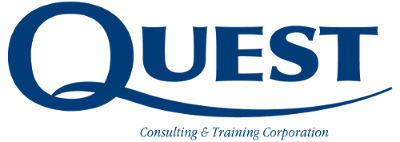Impact on the Organization
To deliver the quality that today’s customer demands, manufacturers must achieve extraordinary consistency in their manufacturing processes. At the same time, they must aggressively reduce costs by eliminating scrap, waste, and rework. Using Statistical Process Control (SPC), they can systematically address both sets of problems: quality and cost.
Learning Objectives
- Learn how SPC can be used to improve quality and reduce operating costs.
- Understand how the different types of SPC charts are used to analyze specific types of data.
- Identify and collect data to optimize processes by knowing how to react to key signals.
- Understand variation, and probability, and their definitions.
- Prioritize issues or problems the collected data uncover.
- Apply the fundamentals to construct a variety of control charts.
Program Description
In this program, participants will develop the skills and master the tools needed to effectively use and implement Statistical Process Control in their organizations. They will learn how to collect, interpret, and analyze process data – and how to solve whatever process problems they identify. It is not enough to have products and process outputs that are within specification; the participants will understand that the goal is to have everything not only in spec, but also in control. By understanding some fundamental concepts of variation (why processes and items are not always exactly the same) they will be able to use the principles of SPC to monitor and control their processes.
Time Investment
Typically 48 hours
Customization
This program can be customized to include your organization’s procedures, policies, cases, examples and terminology. Kindly inquire about these consulting services.
Program Information
Introduction to the Analysis & Interpretation of Data (8 to 12 hours)
Participants in this module are first shown how to diagram the flow of materials, paper, and decisions in your organization via the use of flow charts. As they clarify actual process flows, they will learn how to identify inefficiencies and inconsistencies, and assess which organizational processes might best benefit from the application of Statistical Process Control (SPC).
This module next introduces participants to SPC and its use in quality control. Participants will learn how quality can be defined, how to understand processes in depth, and how to link processes to a deep understanding of customer needs.
Participants will also master essential skills for collecting meaningful data. They will learn about variable and attribute data, random sampling, drawing and check sheets, line and bar charts, and scatter diagrams. Finally, they will explore various ways to analyze and present the data they have collected.
Variation and Probability (4 hours)
In this module participants learn about variation and why it occurs. Sources of natural and unnatural variation are discussed. We will explore how probability relates to process control with some exercises to illustrate these concepts.
Measurement and Distribution (4 hours)
Histograms are constructed by using data that is supplied from real-world examples. Participants learn how SPC charts relate to histograms and what it means in the definition of quality from the customers’ points of view. The Gaussian Distribution is explored along with the different values that are derived from it including variation, standard deviation, mean, range, and their respective calculations.
Introduction to Control Charts (4 hours)
In this module we will review the different kinds of control charts that are used within an organization that uses SPC. The differences between average measurements and individual measurements are discussed.
Variable Charts (8 to 12 hours)
Variables control charts are used to evaluate variation in a process where the measurement is a variable, that is to say, the variable can be measured on a continuous scale. In this module, we explore why we would choose any one of the most common charts that are used for variable data including the X-bar and R chart, the Differences or Target chart, and the individuals chart.
Attributes Charts (4 hours)
Attributes data arise when classifying or counting observations. In this module we study the types of control charts that deal with counting the number of defects or non-conformities as well as those that display data that reflect proportions or fractions of defective products.
Gage R&R (4 hours)
Gage R&R (Gage Repeatability and Reproducibility) is the amount of measurement variation introduced by a measurement system, which consists of the measuring instrument itself and the individuals using the instrument. In this module, a Gage R&R study is taken step-by-step using classroom data. A Gage R&R is a critical step in the implementation of an SPC program. The participant will learn how this kind of study quantifies three things:
- Repeatability – variation from the measurement instrument.
- Reproducibility – variation from the individuals using the instrument.
- Overall Gage R&R, which is the combined effect of the Repeatability and Reproducibility.
Process Capability, Cpk and PPM (4 hours)
Process Capability is the ability of a process to make a feature within its tolerance. In this module, the participants will be able to determine how to calculate the measurement of how well a process is within a specification. They will learn the difference between Ppk and Cpk and when to use and report them. Discussions in the class will also involve some practical alternatives for improving these numbers for particular processes. Also, some discussion on how to calculate defect Parts Per Million Opportunities using appropriate charts including Z-tables will be presented.
